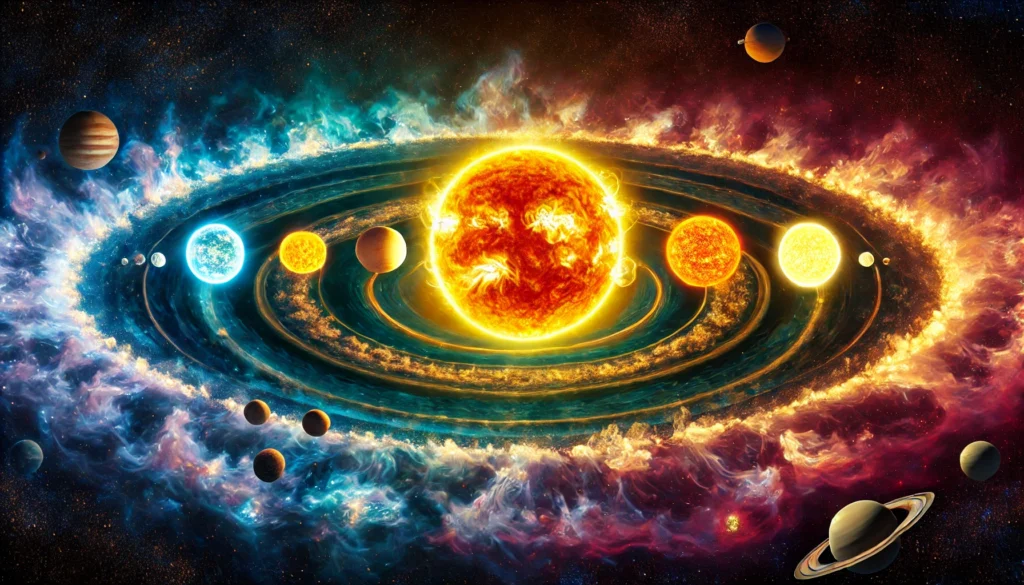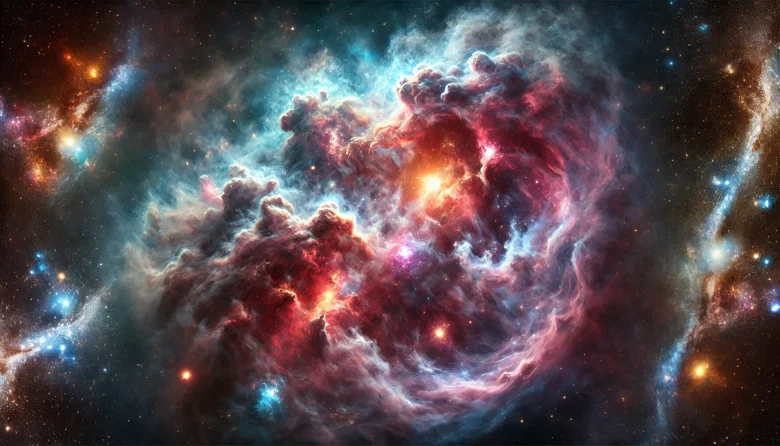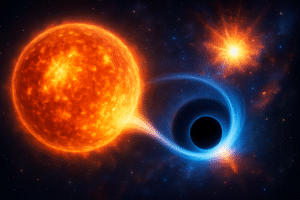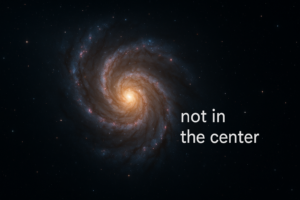Fun fact: Did you know the Sun is about halfway through its life, currently in its most stable phase, called the main sequence?
The Sun, the heart of our solar system, has been shining for around 4.6 billion years. But have you ever wondered what happens as the Sun ages and how its life cycle impacts the solar system? In this blog, we’ll explore how the different stages of the Sun’s life influence the planets, asteroids, and the overall structure of the solar system. Whether you’re a space enthusiast or simply curious about the universe, understanding the Sun’s life cycle offers a fascinating glimpse into the future of our cosmic neighbourhood.
The Life Stages of the Sun
The Sun, like all stars, goes through several distinct phases in its lifetime. Right now, it’s in its main sequence, which is the longest and most stable part of a star’s life. Let’s break down the stages of the Sun’s life and how each affects the solar system.
The Nebula: The Sun’s Birthplace
The Sun’s life began in a massive cloud of gas and dust known as a nebula. Gravity caused this cloud to collapse, and over time, the centre became dense and hot enough to trigger nuclear fusion. This fusion is what powers the Sun and gives it the energy to shine.
During this early stage, the solar system was nothing more than a chaotic cloud of dust. As the Sun formed, it began to influence the surrounding material, pulling it into orbit and gradually forming the planets. This period was marked by intense collisions, as rocks and gas clumped together to form the early solar system. The Sun’s birth was the defining event that laid the foundation for the formation of the planets, moons, and other celestial bodies we see today.

The Main Sequence: The Sun as We Know It
The main sequence phase is when a star is at its most stable, burning hydrogen into helium in its core. For the Sun, this phase has been going on for about 4.6 billion years and will continue for approximately another 5 billion years.
During this time, the Sun provides the perfect conditions for life on Earth. The gravitational pull keeps the planets in stable orbits, and the heat from the Sun powers weather systems, ocean currents, and the process of photosynthesis in plants. The stable energy output has been crucial in the development of life on our planet. But it’s not just Earth that feels the Sun’s effects—every planet in the solar system orbits around it because of its gravitational force.
One interesting case study is Mars, which once had liquid water on its surface, likely due to being in a more favourable orbit around the young Sun. However, as the Sun has slowly become more luminous, Mars lost its atmosphere, causing the water to evaporate and freeze beneath the surface.
The Red Giant Phase: A Solar System in Peril
After the Sun exhausts its supply of hydrogen in the core, it will begin to burn helium, causing it to swell into a red giant. When this happens, the Sun will expand dramatically, potentially swallowing the inner planets, including Mercury and Venus, and coming dangerously close to Earth.
At this stage, the Sun will become hundreds of times larger than its current size. The increased radiation and heat will likely strip Earth of its atmosphere and oceans, rendering it uninhabitable. The outer planets, such as Jupiter and Saturn, will experience a warming effect, potentially melting their icy moons. This dramatic shift will also disrupt the asteroid belt, potentially sending asteroids hurtling toward the remaining planets.
It’s not all bad news, though! Scientists believe that the habitability zone, or the “Goldilocks Zone,” where liquid water can exist, might shift further out. Some moons of Jupiter and Saturn, like Europa or Enceladus, could become warm enough to support life, albeit temporarily.
The White Dwarf: The Sun’s Quiet Retirement
After the red giant phase, the Sun will shed its outer layers, leaving behind a small, dense core known as a white dwarf. This remnant will no longer produce energy through fusion but will still emit some residual heat for billions of years.
The solar system, by this point, will be drastically different. The inner planets may no longer exist, and the outer planets will drift farther away due to the reduced gravitational pull of the dying Sun. Earth, if it survives the red giant phase, will be a barren rock, frozen in place. However, the white dwarf Sun will still exert a gravitational influence on the remaining celestial bodies, keeping them in orbit.
Over time, the solar system will grow cold and dark as the white dwarf gradually cools. The Sun, once the life-giver, will no longer have the power to support life, and the solar system will enter a quiet, frozen state.
How the Sun’s Life Cycle Impacts the Solar System
Now that we’ve explored the life cycle of the Sun, let’s focus on the broader impacts:
Planetary Orbits and Gravitational Stability
Throughout its life, the Sun’s gravity maintains the structure of the solar system, keeping planets, moons, and asteroids in predictable orbits. However, as the Sun transitions into its red giant phase, the gravitational balance will shift, potentially altering planetary orbits.
Atmospheric and Surface Changes
The Sun’s increasing luminosity over time has already impacted planets like Mars, causing it to lose its atmosphere. As the Sun grows older, Earth and other planets will experience drastic atmospheric changes. In the red giant phase, Earth may become a scorched wasteland, while moons like Europa could temporarily gain liquid oceans.
Astrobiological Opportunities
While Earth’s habitability will eventually end, moons around gas giants like Jupiter could become potential new sites for life as the Sun expands and heats up the outer solar system. This presents exciting possibilities for astrobiology—could life exist on a warm Europa or Titan?
The Final Freeze
Once the Sun becomes a white dwarf, the solar system will gradually lose its warmth. Any remaining life, if it exists, will struggle to survive in the frigid conditions. The solar system will enter its final, quiet stage, with planets and remnants of asteroids orbiting a dying Sun.
Conclusion: Our Solar System’s Fate
The Sun’s life cycle is a journey that not only shapes its own destiny but also profoundly impacts the entire solar system. While we still have billions of years before the Sun’s red giant phase, understanding this cosmic evolution helps us appreciate the delicate balance that allows life to flourish on Earth. It also raises thought-provoking questions about the future of human civilization and whether we’ll explore and inhabit new worlds when the Sun’s changes make Earth uninhabitable.
The Sun’s life and death remind us that everything in the universe has a cycle, and while the solar system’s future may seem distant, it’s a reality we should continue to study and prepare for.
Author’s Note:
Thank you for joining me on this journey through the Sun’s life cycle! Our solar system is a dynamic, ever-changing place, and I hope this blog has sparked your curiosity about our cosmic future. If you have any thoughts or questions, feel free to share them!
G.C., Ecosociosphere contributor.
References and Further Reading:
- NASA – The Life and Death of Stars
- The Universe and the Sun – Fajar Magazine. https://www.fajarmag.com/the-universe-and-the-sun/
- 6 Reasons Why Everything You Know Will End. https://www.wirebiters.com/6-reasons-why-everything-you-know-will-end/
- Drennan, D. N., Rusert, E. L., & Biggs, M. S. (1978). Development, fabrication and test of a high purity silica heat shield. https://core.ac.uk/download/pdf/42868858.pdf
- 10 Sun Facts to Light Up Your Life – The List Love. https://thelistlove.com/10-sun-facts-to-light-up-your-life/





Comments
Usually I do not read article on blogs however I would like to say that this writeup very compelled me to take a look at and do it Your writing style has been amazed me Thank you very nice article